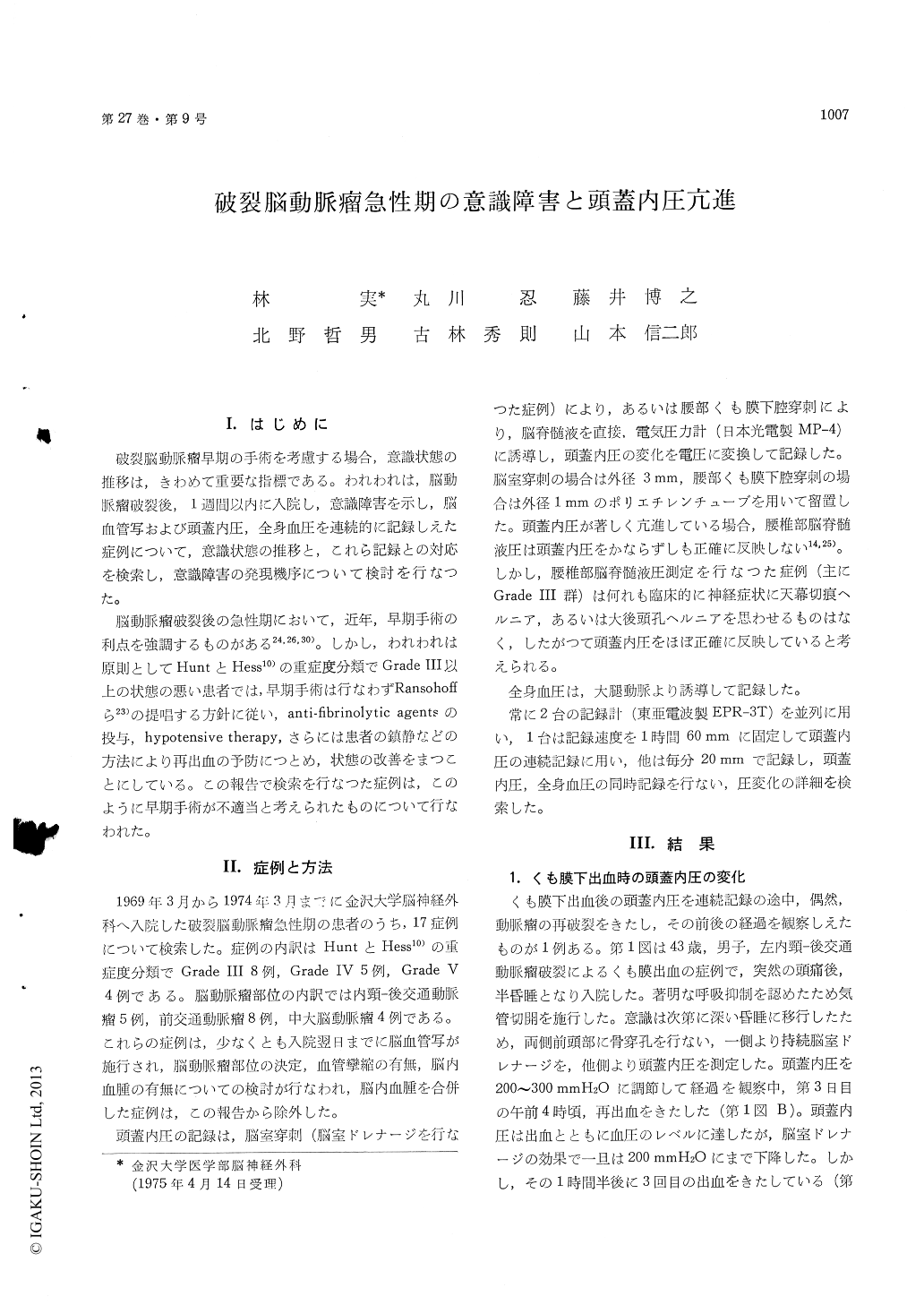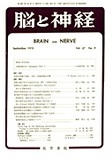Japanese
English
- 有料閲覧
- Abstract 文献概要
- 1ページ目 Look Inside
I.はじめに
破裂脳動脈瘤早期の手術を考慮する場合,意識状態の推移は,きわめて重要な指標である。われわれは,脳動脈瘤破裂後,1週間以内に入院し,意識障害を示し,脳血管写および頭蓋内圧,全身血圧を連続的に記録しえた症例について,意識状態の推移と,これら記録との対応を検索し,意識障害の発現機序について検討を行なつた。
脳動脈瘤破裂後の急性期において,近年,早期手術の利点を強調するものがある24,26,30)。しかし,われわれは原則としてHuntとHess10)の重症度分類でGrade III以上の状態の悪い患者では,早期手術は行なわずRansohoffら23)の提唱する方針に従い,anti-fibrinolytic agentsの投与,hypotensive therapy,さらには患者の鎮静などの方法により再出血の予防につとめ,状態の改善をまつことにしている。この報告で検索を行なつた症例は,このように早期手術が不適当と考えられたものについて行なわれた。
Since the microtechnique has been introducedfor the intracranial aneurysmal surgery, the trendhas been toward the operation for ruptured intra-cranial aneurysm very soon after the subarachnoidhemorrhage.
Continuous long-time records of intracranial pres-sure (ICP) and systemic arterial pressure were madein 17 patients admitted with subarachnoid hem-orrhage due to a ruptured intracranial aneurysm.The period of recording was for between 1 to 7days. Each of these patients showed disturbedconsciousness and was unfit for immediate surgery.These patients were graded according to themethod of Hunt and Hess (1968). The relation-ship between ICP and grading system was assessedin this analysis. In patients graded III, the meanICP level was between 200 and 500 mmH2O, andin patients graded IV, the mean ICP level was be-tween 400 and 800 mmH2O. In Grade V patients,the mean ICP exceeded 1000 mmH2O.
The relationship between vasospasm by arte-riogram and grading system showed little correla-tion.
Tracing of the ICP in Grade III and IV patientsshowed transient rises called "pressure waves",and the waves are recurring increases in ICP tovalue of 200-300 mmH2O in Grade III and 400-500mmH2O in Grade IV patients superimposed on anelevated level of the ICP. Analysis of the wavesrevealed two kinds of rhythmic variations relatedto periodic breathing of Cheyne-Stokes' type (B-wave) and to the variations of the arterial bloodpressure (C-wave). The patients became stuporor coma while at B-waves. These waves are ofvasomotor origin indicating an instability of thecerebral vascular bed. It is remarkable that in ourseries of patients with ruptured intracranial an-eurysms we never observed a plateau wave. Trac-ing of the ICP in Grade V patients showed onlyvariations caused by the arterial pulse. Thisphenomenon suggests vasomotor paralysis.
The vasomotor irritability in patients graded IIIor IV and the vasomotor paralysis in patients gradedV are the important phenomena as well as intra-cranial hypertension when considering the operationfor ruptured intracranial aneurysms very soon afterthe subarachnoid hemorrhage.

Copyright © 1975, Igaku-Shoin Ltd. All rights reserved.


